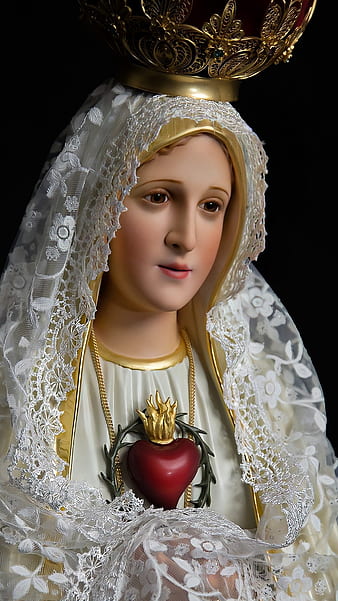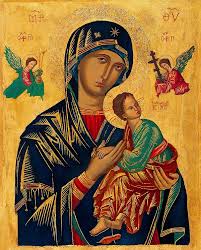The Marian Dogma: Theological Foundations and Contemporary Significance
Introduction: Defining Key Concepts
This article explores the multifaceted theological significance of the Virgin Mary within Catholic Christianity. We will examine key Marian dogmas – doctrines officially defined by the Church – analyzing their historical context, theological implications, and contemporary relevance. Central to this exploration are concepts such as the Immaculate Conception, the Theotokos, and the Assumption, which will be defined and contextualized within the broader framework of Catholic theology and Christology. The application of these concepts will be illustrated through a lens of spiritual experience, devotional practices, and their influence on the lives of believers.
1. The Immaculate Conception: A Primordial Grace
The dogma of the Immaculate Conception, proclaimed in 1854, asserts that Mary was conceived without original sin. This preemptive grace, unique in human history, prepared her to be the worthy Mother of God. The concept aligns with the broader theological understanding of God's prevenient grace, enabling human cooperation with divine action. Applying this concept, we see Mary's immaculate conception not as an exemption from human experience, but as a divinely orchestrated condition for her role in salvation history. It signifies God's proactive involvement in the plan of redemption, setting the stage for the Incarnation.
2. The Annunciation: The Fiat of Faith
The Annunciation, narrated in Luke 1, depicts Mary's response to the angel Gabriel's announcement of her divine motherhood. Her "fiat," her "yes" to God's will, exemplifies perfect obedience and unwavering faith. This event showcases the concept of free will within divine providence; Mary's choice underscores the importance of human agency in God's salvific plan. In applying this, we observe the model of faith and trust Mary provides for believers today – responding to God's call despite personal uncertainties or anxieties, exemplifying the virtue of humility in the face of the divine.
3. Mary, Theotokos: Mother of God
The Council of Ephesus (431 AD) definitively proclaimed Mary as Theotokos, "God-bearer." This title affirms the full divinity of Christ, whose humanity is inseparably united with his divine nature. This dogma highlights the fundamental Christological principle of the hypostatic union. Applying this concept, we recognize that the title "Mother of God" is not merely metaphorical, but reflects the ontological reality of Jesus Christ's divine sonship and Mary's unique role in the Incarnation. This reinforces the belief that Mary's motherhood is intrinsically linked to the central mystery of Christian faith.
4. Perpetual Virginity: A Sign of Consecration
The Catholic Church maintains the belief in Mary's perpetual virginity, both before, during, and after the birth of Jesus. This teaching, often misunderstood, emphasizes Mary's total consecration to God and her unique relationship with him. It isn't merely a biological assertion, but a theological one, reflecting a life completely dedicated to the divine mission. Applying this principle, we see Mary's virginity as a powerful symbol of complete self-giving to God, a model for consecrated life and a reminder of the importance of maintaining purity of heart and devotion.
5. Mary's Intercession: A Maternal Ministry
The belief in Mary's intercession rests on the understanding of the communion of saints and the efficacy of prayer. Mary, having attained perfect union with God, intercedes for humanity, drawing upon her unique relationship with her Son. This resonates with the theological concept of the communion of saints – a mutual sharing of graces and spiritual support among the living and the departed. Applying this in practice, Catholics find solace and encouragement in seeking Mary's intercessory prayers, understanding her role as advocate and spiritual mother, mirroring the maternal role within a family.
6. Marian Apparitions and Private Revelation
Throughout history, reported Marian apparitions have played a significant role in Catholic piety. These events, often associated with messages of conversion, repentance, and prayer, are considered private revelations, distinct from divine revelation contained in Scripture and Tradition. The Church's approach to these events involves careful theological discernment, emphasizing that the credibility of any apparition relies on its alignment with Catholic doctrine and a life of holiness in the seer. Applying a critical approach, we recognize that apparitions, while possibly spiritually significant for individuals, are not definitive sources of dogmatic teaching.
7. The Rosary: A Contemplative Practice
The Rosary, a popular form of Marian devotion, involves meditative prayer on the mysteries of Christ's life and Mary's role within them. This practice fosters a deeper understanding of salvation history and strengthens one's relationship with both Jesus and Mary. The Rosary exemplifies the theological principle of lectio divina, contemplative prayer focused on scripture. Through the repetition of prayers and reflection on the mysteries, practitioners aim to cultivate inner peace, spiritual growth, and a strengthened bond with the divine.
8. The Assumption: The Coronation of Faith
The dogma of the Assumption, proclaimed in 1950, states that Mary was taken body and soul into heaven at the end of her earthly life. This doctrine underlines the triumph of grace over death and the promise of resurrection for all believers. The Assumption reflects the eschatological hope of Christian faith – the ultimate victory over sin and death. Through this doctrine, Mary serves as a model for the fullness of Christian life and the ultimate hope of glorification in the presence of God.
9. Mary as Spiritual Mother: A Model of Discipleship
Catholic theology depicts Mary not just as the Mother of God, but also as our spiritual mother. This understanding stems from Christ's entrusting of John to Mary's care at the cross, signifying a maternal role extended to all believers. This concept resonates with the theological principle of spiritual motherhood – a role of guidance, intercession, and spiritual nurturing. Applying this, Catholics find in Mary a model of faithful discipleship and a source of spiritual guidance and comfort, reflecting the nurturing aspect of the family of God.
10. Love, Devotion, and the Miraculous
The perceived "miraculous" aspects associated with Mary ultimately stem from the theological understanding of God's power and grace operating within the context of faith and devotion. While claiming specific miraculous events requires rigorous scrutiny, the transformative power of faith and devotion to Mary is a widely attested spiritual experience. Applying this perspective requires a balanced approach, recognizing that authentic faith fosters a life of grace and spiritual growth, while any claim of the miraculous needs critical evaluation within a theological framework.
Conclusions and Recommendations
The Marian dogmas offer a rich tapestry of theological insight into the nature of God, the person of Christ, and the role of humanity in God's plan of salvation. These doctrines, deeply rooted in Scripture and Tradition, continue to shape Catholic faith and practice. Further research should investigate the evolving interpretations of Marian theology within contemporary contexts, exploring how these doctrines resonate with the lived experiences of believers today. The integration of interdisciplinary approaches, combining theological analysis with sociological and historical perspectives, will provide a more comprehensive understanding of the multifaceted significance of Marian devotion and its impact on individual lives and the broader Church community. Ultimately, a deeper engagement with these teachings promotes spiritual growth, fosters a deeper relationship with Christ, and inspires a life of dedicated service to God and neighbor.
Reader Pool:
Considering the theological complexities and diverse interpretations surrounding Marian dogma, what are your perspectives on the appropriate balance between traditional doctrines and contemporary understandings in fostering a vibrant and inclusive Catholic faith?
```



